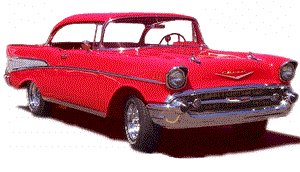|

Cherry Hill Coal Mines Crew!
Bottom Row-L to R-John Render, Claude Maple, Lou Francis, Cecil McCoy, Dennie Saling,
"Fat" Givens, Sam Durham.
Middle Row: Mine Secretary/Bookkeeper from Muhlenberg
County, "Mawh" Porter, Herman King, C. L. Marlow, Hulet Curtis, Jeff Curtis, Dellie
Singleton, Russell Blades, John Tom Eaves, Martin Durham.
There are two on the back row. L to R-Mitchel Curtis and Roy Hoskins.
*********************************************************
:-))
Greetings and a Good Day to you. Guess that with some computer
time and a picture, I will place these tired old fingers on the keyboard and see
what this brain can cause the fingers to punch out. With the above picture and an
identity to all of the mine crew, most all will know some of the miners or at least
recognize the name of Cherry Hill Mines and have a, somewhat, clear picture of
where the mine is located. I don't know very much about this mine, but I should.
A lot of my kin, and the kin of a lot of my friends that I grew up with, were
directly or indirectly involved with the operation of Cherry Hill Mines. As a lad
in the forties and fifties, we played, went to school, and fished and hunted
while Cherry Hill Mines gave up most of its' coal and took some of the miners.
We were just to busy with growing up to be concerned with the mines. The miners
had another story. Some miners retired from the Cherry Hill Mines and ended up
drawing a small pension. Most of the "Long Time" Miners developed "Black Lung"
and paid the price for not wearing protective equipment. These miners died an earlier
death than what would have been normal. This was just one price for working in
a coal mine. A lot of the miners could not take the conditions and just did not
show up for work. The ones that worked until retirement never looked back and retired
as soon as they were eligible. Most of these miners were able to draw "Black Lung"
benefits along with their small pensions. I don't think that Cherry Hill was a
dangerous mine, but at that, there were some deaths and a lot injuries. The complete
operation was probably as safe as the best of mines in the area. Methane or other
"Bad Gases" did not seem to be a problem. On the downside, the output from the
mine went to the Louisville Gas and Electric power plant on the Ohio River, and
was used to produce electricity for the company. Thus, the mine may work one day
and off three. The miners were just not sure of a steady income.
Louisville Gas and Electric Company was, and is today, a "Power" company. They supply
Gas and Electricity to their customers in Louisville and some of the surrounding
area. The natural gas is simply purchased from places like Texas and piped in to
holding tanks and/or underground storage containers and then supplied "As Needed"
to their customers. The electricity is another matter. It, as such, can not be
stored and if a customer flips a switch, a demand for electricity is created and
the "Power Plant Generator", must instantly produce that newly needed power. Most
"Steam Power Plants" use coal to create the heat to produce the steam that turns
the turbine to produce the electricity. Louisville and the surrounding areas do
not have any coal and what is used at their Power Plant much be shipped in from
somewhere else. Now, this is where Cherry Hill enters the picture. The purchase
of coal is the most expensive cost of producing electricity. Not only must the
coal be mined in locations remote from the plant, it much be transported, by some
means, to the plant. Any small savings in a ton of delivered coal, to the plant,
will be magnified many times. L G & E learned a long time ago that they could
purchase the "Coal Rights", from areas of Western Kentucky, as a cost saving
venture, and then have someone mine the coal and transport it to their Power Plant
on the Ohio River. L G & E not only bought the "Coal Rights", they set up a
separate company to mine the coal. Thus, with IC Railroad available to transport
the coal, their operation for a constant coal supply for their power plant was
established. This mode of operation continued for over thirty years.
Twenty or so years into the Twentieth Century, electricity was becoming more
prevalent and even places in rural Kentucky was being "Wired". Now people in small
towns were having access to the wonderful power of electricity. It was used to
light their homes, keep their food cool and even warm their houses. In areas where
"Seams Of Coal" were buried from just a few feet under the ground to over hundreds
of feet, "Coal Miners" were learning how to extract the coal from the earth. Once
extracted, the coal could be used to heat and to cook with, as well as to be sold.
Enter the old Echols and Rockport mines. There were also mines in McHenry and other
areas of Ohio and Muhlenberg Counties, as this area seemed to have several seams
of coal under the ground. To my knowledge, the Echols Mine was located close to
where the Western KY Turnpike made a swath through Echols. The Rockport mines was
located just below the Rockport Bridge on US 62. I think that initially, the Echols
Mine was supplying coal to L G & E and probably all that the mine could produce.
The Rockport Mine had a river loading dock, just below the bridge on US 62. I think
that most of the coal that was mined at Rockport was shipped out by barge. From
the Green River, the coal was barged to the Ohio River and probably some of the
coal ended up in Louisville at the L G & E Power Plant. I think that the
Rockport Mines were locally owned and the Echols Mine had ties to L G & E.
H. L. Tucker, I have been told, was a partner in the Rockport Mine.
I don't think that either mine was a great producer of coal and probably played
out in the late thirties.
In the early Twentieth Century, most of the coal mined was by the "Underground"
method. This was done by digging into the side of the hill or sinking a shaft straight
down to reach the coal seam. The "Slope" method was a mine opening going down to
the coal seam at an angle until the coal seam was reach and then mining the coal
in different directions. The coal could be brought back up by rail car and the
miners could enter and leave the mine in like manner. Most of the mines in this
area used this method. The "Shaft" mines was another method to mine the coal.
This method consisted of sinking a "Shaft", straight down, and then move horizontally
to "Mine" the coal. The miners used an elevator to enter and exit the mining area.
Coal was brought back up to the surface in a similar manner. In either method, the
coal could be removed from the bowels of the earth and the surface area would not be
disturbed. This presented an unique situation where a person could own the land
and another person could own the coal under the land.
The property owners in Western Kentucky, in most cases, were just average working
families trying to make a living. Whether they worked at a job away from home, or
whether they were trying to make a living off their land, in each case, they
were just trying to feed, clothe, and educate their children and put away enough
money for retirement. There was never an excess of money and times were hard.
Oh, there was the "Money People", as today as well as then, that had money to spend
and money to invest. One particular group of people were the owners of the
Beaver Dam Coal Company. While there was not any coal in Beaver Dam, there were
investors. This company went from farm to farm and house to house and presented
an offer, to the property owner, that most owners could not resist. For something
like twenty-five cents to the acre, this Beaver Dam Coal Company purchased the
coal under the ground from the landowner. This became know as having "Mineral Rights"
for the land in question. The "Mineral Rights" gave the company the ownership of
the coal and other minerals, and with written permission to mine the coal in any
means possible. The property owner was presented a small check and not only did he
think that he had a very good deal, but knew that he would never have any use for
the coal that he had sold. Eventually, The Beaver Dam Coal Company owned most of
the "Mineral Rights" in Ohio County. This was not a problem until the "Strip Mining"
method entered the scene, but that is another story.
As the mines in Rockport and Echols played out or were emptied of their coal, industry
and power plants needed more coal. I am thinking that in the mid to late thirties,
the Louisville Gas and Electric Company bought the "Mineral Rights" to the coal in
the Cherry Hill area, formed a company to mine the coal, hired most of the miners
in the Rockport/Echols area, and set up a mine that was named "Cherry Hill".
Assuming that the Echols Mine was associated with L G & E, whether entirely
owned or a partnership, most of the miners already worked for them. It was a short
drive/ride to the new mines and the miners from Rockport and Echols had a new mine
that should last some thirty years. Ah, most of them could retire from their last
mine. It was mostly a win/win situation except that L G & E only needed
enough coal to keep the power plant running and the miners could dig that amount
coal out of the ground by working only a couple of days a week. It was a living
and by selective digging of the coal, the power plant could have a source of coal
for well into the future. A coal mine is finite and Cherry Hill was no exception.
The coal seams were finally worked out and new mines were opening all over the place.
As Cherry Hill was closing new mines were opening. Most of these new mines were
"Strip Mines" and the "Coal Digging" machines, at a strip mine, were behemoth in
size and coal removal capacity. Again, another story.
As the end of the Twentieth Century ended and a new century dawned, Cherry Hill
was no longer a mining area. Where "Strip Mines" made the land almost inhabitable,
the Cherry Hill Mine area became a community. New homes were built and a nice
subdivision became as asset to the community. Where the "Peabody Coal Trains"
hauled off the quaint old town of Paradise, on the banks of the Green River, Cherry
Hill Mine area was mostly recovered and homes and gardens replaced the old mining
machinery.
If you are still reading, thanks. Thanks for looking at this and allowing yourself
to be taken back in time. Please remember that what has been written comes from
the old memory bank. As memory banks age, truth sometimes becomes stretched. Bits
and pieces of information are added to the brain cells and the recollection is
sometimes more and in most cases, less that the actual events. No research has been
done on this item. Have jogged the minds of others to help identify some of the
coal miners and appreciate their time and effort. Appreciate Hilma for her picture
of the miners and for helping identify some of the individuals.
:-)))
See you..............
jrd
Web Page by jrd

Click on 57 Chevy to reply.
|

